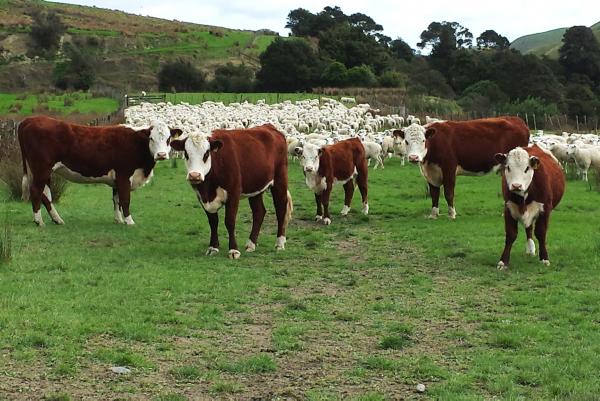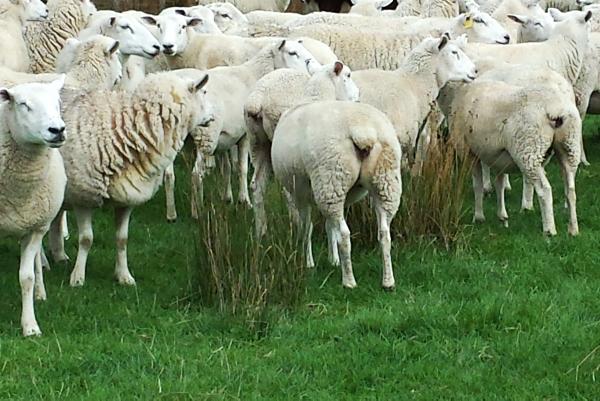I asked some of the Kiwis I met about their view of Ireland. From a beef perspective they couldn't understand how our calving interval was so high and costing us money. While on dairy they are concerned about two competitors; the Americans and the Irish.
To set the scene for where beef farming is located in New Zealand everyone I spoke to quoted me the following sentence. Beef is NZ$4/kg, lamb is NZ$6/kg and milk is NZ$8/kg. Lowlands are used primarily for dairy with short stay livestock such as fattening lamb and cattle next on the priority list. Breeding ewes get first call on the upland grasses and, as suckler cows are the least productive animals, they have been pushed to the outer and upper limits of available grazing land.
Aside from the province of Northland (where the climate is unsuitable for sheep) suckler cows are run with sheep in the majority of businesses, maintaining an 80:20 sheep to beef ratio.
The New Zealand suckler cows primary function is to be graze down grasses that sheep leave behind. What is required on the hill country is a rumen that is capable of converting poor forage into saleable protein in the form of a calf and leaving behind better grass for a more profitable sheep enterprise.
What struck me was the labour efficiency they had there. Temperament issues were not tolerated. Given the isolated nature of the area and work place, a dangerous or awkward cow was removed from the herd at the first available opportunity.
I visited Morrison farming who are developing a herd of cows with the “ezicalve” brand but their ezicare sheep caught my attention. They had selectively bred sheep that didn't require dagging and decided to concentrate less on wool production as this required shearing twice and all the labour associated with it. This reduced their wool sales by 50%. However when added up, it saved the business up to a month a year in terms of labour and time. Their next target is to reduce lamb tail length to remove the need of tail docking and further mustering and handling.
There is increased value on beef coming from the dairy herd in New Zealand. Morrison farms have recognised this and their policy is to breed to their market. They produce easy calving Hereford bulls who go to dairy farms to mop up the end of the breeding season and produce a higher value calf.
Can this be similarly replicated in Ireland? Big bulls might look good in photographs and show rings but are they delivering to their market? At farm level the last thing you want to see at calving is a cow requiring help and the last thing a consumer wants is large cuts of beef that are too expensive and get left on the shelf. With the abolition of milk quota less than 12 months away could we see a similar situation develop in Ireland? If there is a drop to 600,000 suckler cows, can the balance of beef cattle come from using beef sires on a proportion of a larger dairy herd?






 This is a subscriber-only article
This is a subscriber-only article









SHARING OPTIONS: